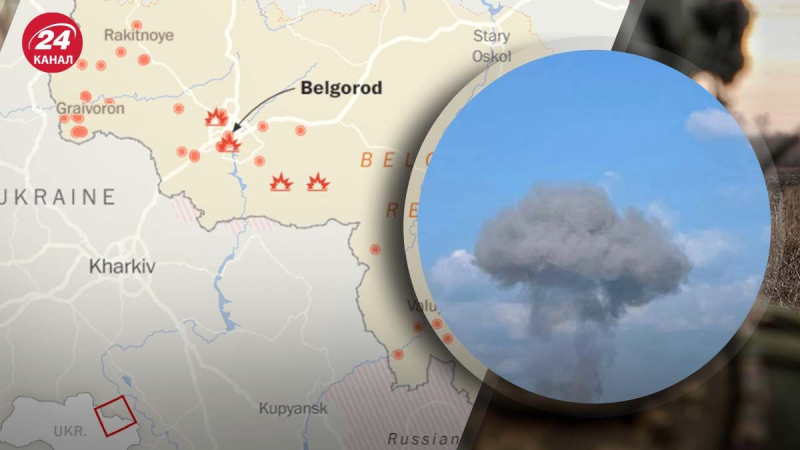The Washington Post received evidence of glider bombs falling on Russian territory Irina Martsiyash Dozens of Russian glider bombs fell on Russian territory/Collage 24 Channel (Infographics The Washington Post/Illustrative photo) American edition The Washington Post has obtained internal Russian documents that show that the glider bombs that the occupiers launched into Ukraine fell on Russian territory. Ob This is stated in the material of The Washington Post. According to the document, at least 38 bombs, credited with Russia's recent territorial gains, fell in the Belgorod region on the border with Ukraine between April 2023 and April 2024, although most did not explode. It is noted that at least four bombs fell on the city of Belgorod itself, a regional center with a population of about 400 thousand people. Another 7 were found in the surrounding suburbs. Most of all, namely 11, fell in the border Grayvoronsky region, where some of them could not be found due to the “difficult operational situation.” The publication indicated that the document , was originally intercepted by Ukrainian intelligence and provided to The Post, contains a table of incidents with links to emergency bomb disposal and evacuation orders, and is a product of the city of Belgorod's emergency department. Dozens of Russian glider bombs fell on Russian territory/Infographics The Washington Post Most of the bombs were discovered by civilians – foresters, farmers or residents of surrounding villages. In most cases, the Ministry of Defense did not know when the bombs were launched, indicating that some of them may have been there for several days. The publication writes that the independent Russian media outlet Astra has confirmed that many of the incidents described in the document match those it has received from local authorities and from local media reports. Local Authorities , in general, remain silent about these incidents, reporting only “accidents”, blaming them on Ukrainian shelling, or simply not reporting the various explosions that have occurred in the region, especially recently. < p>According to Astra's calculations, Russia has accidentally dropped more than a hundred bombs on its own territory and on occupied areas of eastern Ukraine over the past four months, a period that has seen a significant increase in the use of glider bombs. The Russian government did not respond to requests for comment on the document or the reports of glider bomb failures. Glider bombs are a Soviet relic of the Cold War, designed as “dumb bombs” to be dropped on a target. Russia has adapted this vast arsenal of unguided bombs for modern warfare by upgrading them with guidance systems known as UMPK kits – cheap retractable wings and navigation systems. This allows Russia’s Su-34 and Su-35 jets to launch them from about 40 miles away, out of range of most Ukrainian air defenses. The Washington Post noted that the glider bombs have put additional pressure on Ukraine’s ground-based air defenses and were instrumental in the destruction of Avdiivka, which Russian forces captured in mid-February. Ukraine’s best defense against them is the U.S. Patriot surface-to-air missile, which can destroy a Russian plane before it can approach to release the bomb, but these systems are in short supply, the publication noted. At the end of March, the Russian Defense Ministry announced the development of a new, heavier version of the FAB-3000 glider bomb. It was finally deployed on June 21 against the Ukrainian village of Liptsy. The Russian military also reported that production of the light FAB-500 and FAB-1500 had been significantly increased.
Dozens of Russian glider bombs fell on Russian territory
The Washington Post received evidence of glider bombs falling on Russian territory
42

